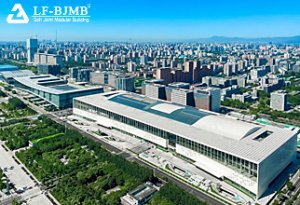+86 177 5193 6871
222, Block B, Diamond International, Guozhuang Road, Xuzhou, Jiangsu, China
The second phase of the China National Convention Center (CNCC) project is the Main Press Center (MPC) and the International Broadcasting Center (IBC) of the Beijing 2022 Winter Olympics. Due to the functional needs, the first floor of the CNCC second phase project mainly consists of an 8,000 square meter conference hall in the north and a 19,000 square meter main exhibition hall in the south, and both of these two areas are designed as a large-span steel structure “column-free space”, which also needs to carry two high, heavy-duty floors and roof structures. Both areas are designed as large-span steel “column-free spaces”, on which two high, heavy-duty floors and a roof structure need to be carried.

China National Convention Center Phase II
In order to solve the structural “heavy pressure” of the superstructure of the column-free space, the building design adopts the “conversion truss” structural system with a height of 7.7 meters, consisting of transverse, longitudinal and diagonal rods crosswise. This conversion truss system has a span of 81 meters and a total load-bearing capacity of 46,500 tons, carrying two large “column-free spaces” downward and lifting 1.6 times its own weight upward, so that the gravity of the superstructure is uniformly transmitted to the supporting columns on the side of the first floor, thus realizing the force balance of the entire building structure.
In order to make sure, Beijing Construction Engineering project team used professional calculation software to carry out long time “big data” calculation on truss unloading, and repeatedly researched, explored, analyzed and improved, and finally determined the optimal unloading sequence of 205 temporary supporting columns, and carried out stressing tests on key points and segments such as bending area of steel columns, main and secondary conversion trusses, chords and web rods with large deformation, and so on. Through stress monitoring of key points such as steel column bending areas, main and secondary conversion trusses, chords and web rods with large deformation, the structural safety during unloading was ensured.
